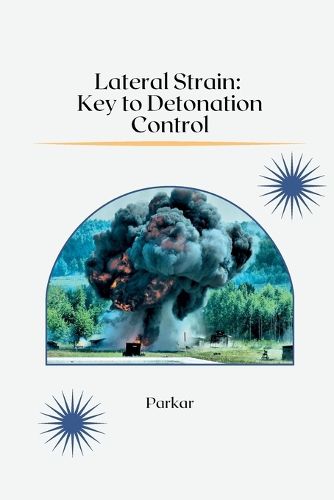Readings Newsletter
Become a Readings Member to make your shopping experience even easier.
Sign in or sign up for free!
You’re not far away from qualifying for FREE standard shipping within Australia
You’ve qualified for FREE standard shipping within Australia
The cart is loading…






Detonation waves are self-sustained supersonic combustion waves [1]. These waves are led by a shock, which compresses the fresh reactive media to a much higher temperature and pressure for rapid reaction [1]. The tremendous reaction heat release occurring behind the shock in return energizes the propagation process. As such, this closely coupled shock-reaction complex self-sustains. Detonation waves can be sustained in a variety of energetic media including reactive gases. The large overpressures generated behind gaseous detonations make them attractive and useful for developing propulsion systems [2], such as rotating detonation engines (RDEs) [3, 4] and pulse detonation engines (PDEs) [5, 6]. These applications require reliable control of the accurate ignition and stable propagation of a detonation wave. Likewise, for safety applications [7,8], it is also desirable to have the predictability for the eventual initiation of a detonation wave and for its propagation limits when different mitigation strategies are used [9]. Therefore, realizing all these practical purposes requires predictive capability of detonation behavior. Detonations in gases usually propagate with lateral strain. For example, in confined geometries of small size, such as narrow channels or tubes, detonations are subject to significant losses induced by boundary layers, which act as a mass sink and result in flow divergence in reaction zones, thereby giving rise to lateral strain impacting the detonation propagation [10]; while in geometries of varying cross-section areas or curved channels, as typically seen in PDE pre-detonator tubes and RDE combustors, detonations are curved with the flow also diverging after passing the leading front [11-13]. These lateral strain rates are generally known to decrease the detonation speed and its propagation limit [10, 11, 13-17]. Thus, in order to achieve the practical purposes of either utilizing or avoiding detonations, the effect of such lateral strain rat
$9.00 standard shipping within Australia
FREE standard shipping within Australia for orders over $100.00
Express & International shipping calculated at checkout
Detonation waves are self-sustained supersonic combustion waves [1]. These waves are led by a shock, which compresses the fresh reactive media to a much higher temperature and pressure for rapid reaction [1]. The tremendous reaction heat release occurring behind the shock in return energizes the propagation process. As such, this closely coupled shock-reaction complex self-sustains. Detonation waves can be sustained in a variety of energetic media including reactive gases. The large overpressures generated behind gaseous detonations make them attractive and useful for developing propulsion systems [2], such as rotating detonation engines (RDEs) [3, 4] and pulse detonation engines (PDEs) [5, 6]. These applications require reliable control of the accurate ignition and stable propagation of a detonation wave. Likewise, for safety applications [7,8], it is also desirable to have the predictability for the eventual initiation of a detonation wave and for its propagation limits when different mitigation strategies are used [9]. Therefore, realizing all these practical purposes requires predictive capability of detonation behavior. Detonations in gases usually propagate with lateral strain. For example, in confined geometries of small size, such as narrow channels or tubes, detonations are subject to significant losses induced by boundary layers, which act as a mass sink and result in flow divergence in reaction zones, thereby giving rise to lateral strain impacting the detonation propagation [10]; while in geometries of varying cross-section areas or curved channels, as typically seen in PDE pre-detonator tubes and RDE combustors, detonations are curved with the flow also diverging after passing the leading front [11-13]. These lateral strain rates are generally known to decrease the detonation speed and its propagation limit [10, 11, 13-17]. Thus, in order to achieve the practical purposes of either utilizing or avoiding detonations, the effect of such lateral strain rat